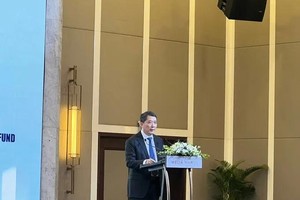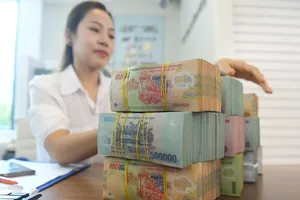
For the final months of 2025, the Government’s top priority remains promoting economic growth while safeguarding macroeconomic stability, keeping inflation in check, and ensuring the economy’s major balances, including the budget deficit and public debt, remain within the limits set by the National Assembly.
The Government is resolutely striving to achieve a GDP growth rate of 8.3 - 8.5 percent for 2025, with the average consumer price index (CPI) targeted at below 4.5 percent, all while continuing to improve the material and spiritual lives of the people.
To hit these ambitious targets, the Prime Minister’s directive emphasizes the need for concrete, feasible solutions to unlock more resources for production and business activities.
In a significant policy shift, Prime Minister Pham Minh Chinh has ordered the State Bank of Vietnam (SBV) to take the lead in developing a roadmap to pilot the removal of credit growth targets, with implementation slated to begin in 2026.
This pilot will not be a free-for-all; it will require the creation of strict criteria for participating credit institutions. Only banks that are efficient, financially healthy, and demonstrate strong governance while complying with all banking safety ratios will be eligible, ensuring a transparent and well-managed process.
The SBV will be responsible for enhanced inspection, supervision, and post-audits to prevent systemic risks, ensure the security of the entire credit system, and maintain control over inflation.
The central bank is also directed to continue pushing credit institutions to streamline their costs, simplify administrative procedures, and accelerate their digital transformation. The goal is to create more headroom to lower lending interest rates, thereby supporting businesses and citizens under the principle of “harmonized benefits, shared risks”.
Credit flows are to be safely channeled towards priority sectors, including the economy’s traditional drivers (investment, exports, consumption) and its new engines of growth (science and technology, innovation, the digital and green economies).
The Prime Minister specifically ordered an immediate review to build and supplement priority policies for several key initiatives. These include a credit program for people under 35 to purchase or rent social housing, and a VND500 trillion credit package (US$19 billion) for enterprises investing in infrastructure, technology, innovation, and digital transformation.
“Policy implementation must be timely and effective; there will be no formality, and we will decisively not allow a situation where there is money that cannot be disbursed”, the directive stated emphatically.
The Government also called for a broader push to diversify resources for economic development, to accelerate the disbursement of public investment funds, to restructure the agricultural and industrial sectors towards large-scale, modern production, and to effectively promote the construction of social housing.
The directive set a clear deadline, ordering ministries to focus on definitively resolving long-standing backlogs on key electricity projects within the month of August and to effectively implement the 2025 tourism stimulus program.
The overall message was a call to action for all government bodies to contribute proactively to achieving the nation’s goals of macroeconomic stability, inflation below 4.5 percent, and growth between 8.3 and 8.5 percent.









)

)












